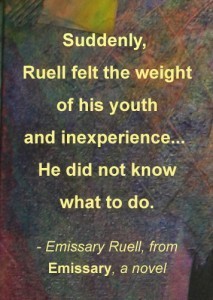A Quick 9-Question Novel Outline
Although I’m not an official NaNoWriMo “winner,” I’ve published a number of novels, and the rough draft of one of those, some 55,000 words, was completed in the 30 days of November. Every writer has his or her own methods, but I’ve found that spending 10-20 minutes to complete a quick outline makes the work go smoother.
This 9-Question working outline helps me stay focused. Perfection is not the goal. Getting the story roughly outlined is the goal: a simple reference to keep you focused as you write.
1. Who? Who is your hero, what does s/he want (story goal)? Whether you introduce the hero first or the story question first is entirely subjective and usually depends on the type of story you’re telling.
Show, briefly, the hero’s ordinary world, family, career, location—whatever is pertinent to the story. Include a character strength—belief, skill, knowledge, etc—that will carry the hero forward.
2. Why? Why does s/he care (heart vs. duty) and what are the stakes? Imagine a bridge between the hero’s static but natural world and the story world where chaos and conflict reign. What is important enough to make the hero enter that world?
Don’t confuse subplot goals or individual scene goals with the overall story goal. Your hero might have a crisis in progress when the story opens—a storm coming or the dishwasher has flooded the kitchen—but this is not what the story is about. Unless it’s pertinent to the ending, such detail is not included in your quick outline.
3. What? What immediate conflicts prevent the hero from grabbing the brass ring? Imagine the first time a carousel circles, the ring is out of reach. The hero stands on a horse for better reach, but just as he’s about to grab it, a carnival clown walks by and gets in the way. Still standing, the hero reaches for the ring again, but another carousel rider knocks her off the horse. Conflicts always must escalate in intensity. Quickly brainstorm major obstacles the hero will encounter.
Introduce the nemesis, the person who most stands in the way of your hero achieving the story goal.
4. What new information kills off former assumptions? At the midpoint, where a story might otherwise sag, give it an extra punch. Spin it in a new direction. Both Chris Vogler and Michael Haig suggest a “death in the middle,” though not necessarily the death of a person. It might be the death of innocence, death of an idea or an ideal, or death of the goal – only to be replaced by a second, closely related and more important goal. Remember, this is a “sketch,” hitting only the high points. Do not include blow-by-blow scene descriptions.
5. What new story question emerges? Show us what the hero is thinking and planning, based on the new situation presented at the midpoint—and remind us of the ticking clock.
6. What new conflicts arise? These are often questions to be answered or problems to be resolved. Use escalating action—make sure each story point is more exciting, more devastating, more insurmountable than the last.
7. What final devastating blow raises the stakes? This is the hero’s lowest moment, when all is lost and there seems no way out. Give more word space to the final obstacle, then describe the hero’s internal struggle with tackling this last—and most frightening—obstacle.
8. What decision triggers the climax? What burst of faith or energy or determination brings the hero back into the fight?
9. What is the final conflict, where does it happen, what is the outcome? Rarely can I answer this final question in detail until I’m deep into the writing, but it helps to have the question always out there ready to be answered as soon as you can clearly see it.
While the answers to these nine questions may not write your story for you, they will certainly help you tell it in the concise manner a rough draft requires. As a bonus, once your novel is finished, the same 9 questions will serve in writing a synopsis.





